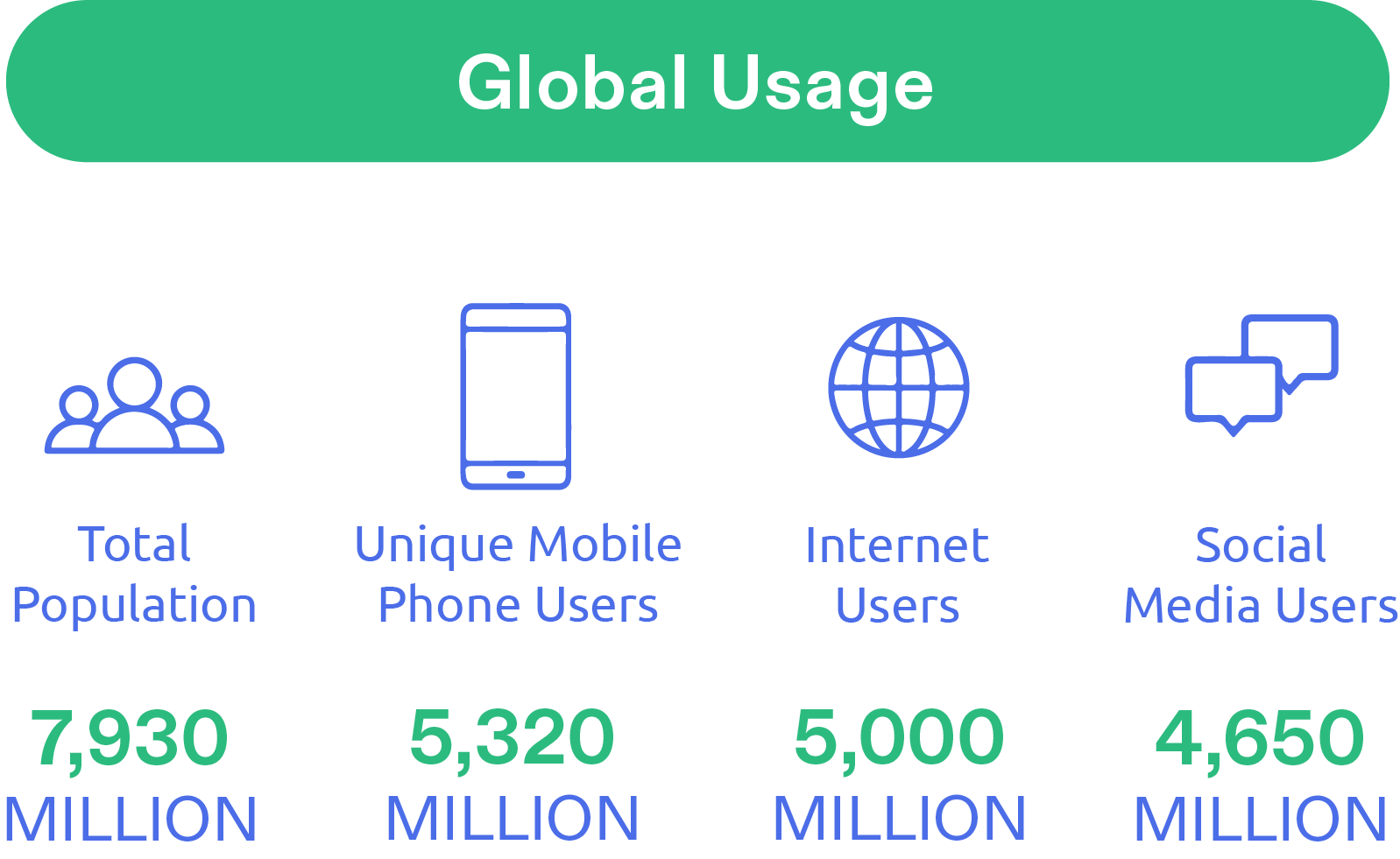Users with Access to Internet
The origins of the Internet date back to 1947 with the beginnings of the Cold War, a global confrontation that began at the end of World War II. Conflict arose from the tension between the western-capitalist block led by the United States and the eastern-communist block then led by the Soviet Union. It was called the “cold war” because the two sides never clashed directly.
In 1957, the USSR launched the first artificial satellite in history — Sputnik 1 — and, in this context, the Advanced Research Projects Agency, known as ARPA, was organized in the United States Defense Department. It was created in response to the technological and military challenges presented by the USSR. A decade later, it would be considered the organization that laid the foundation for what, decades later, would become known as the Internet.
Over the next few years, many advancements were made. In 1962, a United States Government researcher introduced a communications system that, through the use of computers connected to a decentralized network, was immune to external attacks. In the event that one or several nodes were destroyed, the others could continue to communicate without any problems.
This led to the establishment of a network that could be accessed from anywhere in the world, which they named the “galactic network.” In 1965, a TX2 computer in Massachusetts was connected to a Q-32 in California via a switched telephone line, albeit a low-speed and still limited one. It worked. This prototype allowed people to work in a connected way, but, as it is easy to imagine today, the system was inadequate.
In 1969, Michel Elie, considered one of the pioneers of the Internet, joined ARPA with a research grant. At the end of this year, a computer at UCLA, a United States university, was connected to another at the SRI (Stanford Research Institute).
Shortly after, the number of interconnected United States universities had risen to four. This network was called ARPANET, and the objective of this development was to maintain communications in the event of war, given the uncertainty and fear around this possibility at the time. This was quite revolutionary because, before this time, only centralized networks had been used, and it was considered that these would be insecure in the event of war because the system could be easily disabled.
In 1970, ARPANET was solidified. Ray Tomlinson laid the groundwork for what is now known as email.
By 1972, ARPANET had already incorporated 50 universities and research centers distributed throughout the United States. A year later, it established connections with other countries, including England and Norway.
With the boom in the commercialization of computers, the number of connected computers increased, and as of the 1980s, other networks began to appear. As we can imagine, this caused chaos due to the wide variety of formats of connected computers. Once these were unified and solidified, the Internet was born.
When Was the Internet Born? (at least, when did it become available to the masses)
The year 1983 is considered the official year in which “the internet was born.” The United States Department of Defense decided to use the TCP/IP protocol in its ARPANET network, thereby creating the ARPA internet network. Over the years, it became known as just “internet.”
On March 12, 1989, Tim Berners Lee first described the hypertext transfer protocol that would lead to the first website, using three new resources: HTML, HTTP, and a program called Web Browser. A year later, the internet was born internally within CERN, and in August 1991, users outside CERN began to be able to access this information.
The World Wide Web grew rapidly: in 1993 there were only 100 World Wide Web Sites, and by 1997 there were more than 200,000.
What Does “Internet” Mean?
The name “internet” came from a need to speed up communications. The name is an abbreviation of “interconnected network.” In any case, we could say that the Internet is a globally interconnected network, something very similar to what the famous WWW means, “WorldWide Web.”
From this moment on, the way we become informed and communicate, and the functioning of markets, was forever changed. The internet allowed us to access information and knowledge that our ancestors took years to learn.
The Growing Number of Internet Users in the World
Year after year, the number of internet users in the world increases exponentially, a figure that has been driven by increased access to mobile devices.
According to data from the Digital 2021 report, carried out by We Are Social and Hootsuite, the number of Internet users in the world has surpassed 5 billion people, which represents 63% of the population (7.93 billion people).

In January 2022, unique users from mobile devices reached 67% of the world’s population, that is, 5.32 billion people, which represents 1.8% more compared to the data from January 2021; an increase of 95 million users.
The Rise of E-Commerce
With the creation of the first iPhone, created by the Apple brand in 2007, it was now easier than ever to access the internet from a mobile device. The appearance of new technologies like this one led to electronic commerce acquiring more and more relevance, and more and more companies started expanding their business towards digital commerce.
The example of Amazon should be highlighted. Currently one of the largest and most impressive eCommerce platforms in the world, founder Jeff Bezos started Amazon in 1997 as an electronic bookstore, operated from the garage of his home in Seattle and funded by capital donated by his family. It has now become one of the most powerful online businesses in the world. Amazon’s 2019 revenues reached 316 billion euros, through online sales, commissions received from marketplace sellers, advertising revenue, Prime subscriptions, and even cloud hosting services through AWS.
